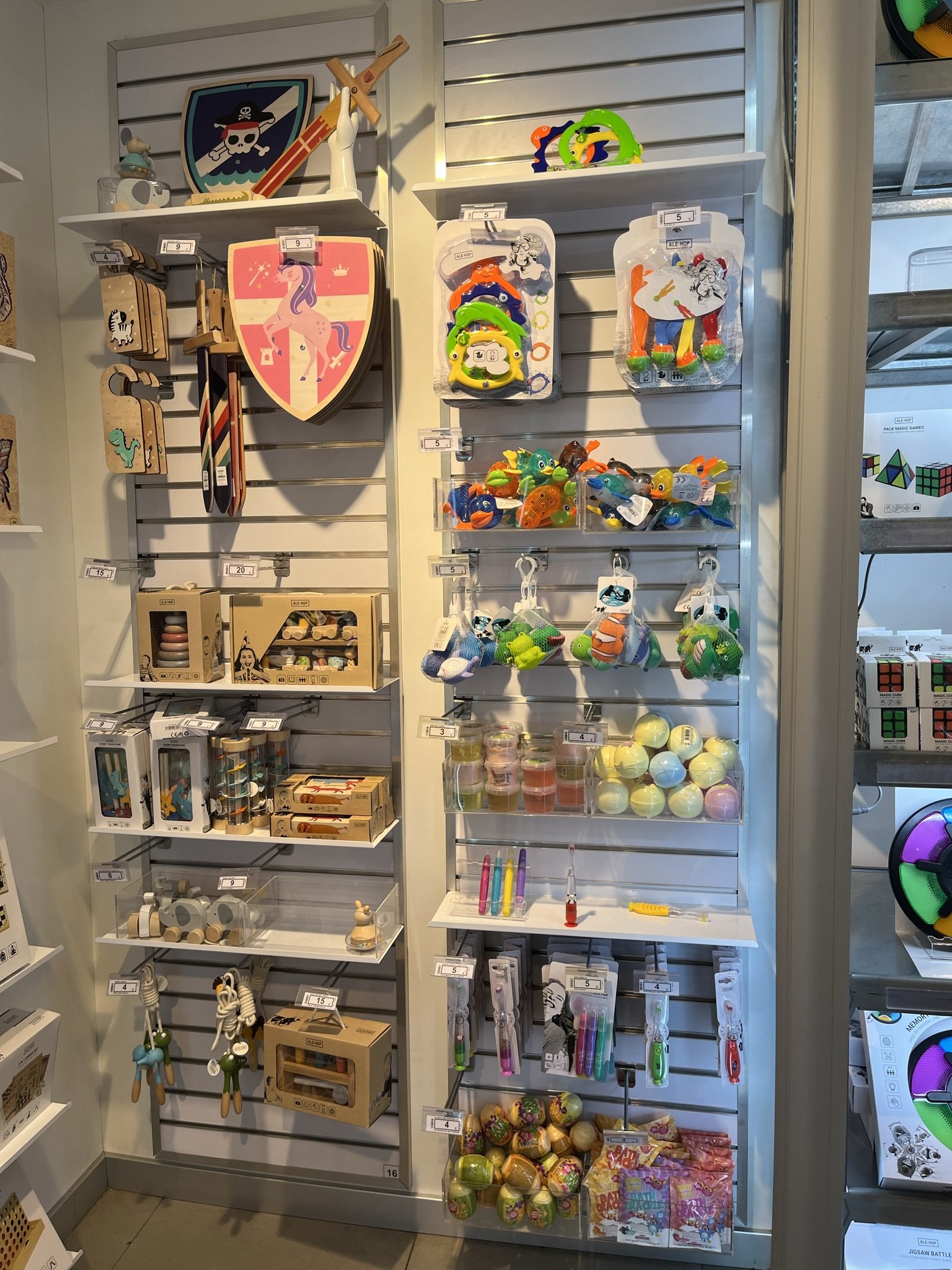STORE INSIGHTS: Ale-Hop
This summer I spent about 2 months in Europe this summer. It may seem a bit too much for some of you, but at the time it seemed like just about enough time to rest and relax. Whilst in and out of museums, I could not help but wonder into stores. Some of them well-known, and some others a pleasant surprise. The first store I visited whilst in Barcelona was Ale-Hop.
Some of you may be already very well acquainted with this store, others might wonder what its concept and why is there always a huge plastic cow outside their stores. Vicente Grimalt started the store with an entirely different idea mind, first selling shoes and carrycots, and then expanding into gifts, homewares, cleaning supplies and event registries. It wasn’t until 2001 when Ale-Hop, as we know and love it, was born.
Ubiquitous in the Iberian Peninsula, Ale-Hop has been quickly expanding into other markets, including Croatia, Italy and Mexico, and is now expected to generate over 170 million Euros across 280 points of sale. This growth has been facilitated by the three fulfilment centers they have across the region, and will soon open the fourth one towards the end of this year.
Their business model is not unique to the industry; however, it is surprisingly fast. Currently, Ale-Hop has over 6,000 SKUs in their system across 7 categories: parties and entertainment, kids, stationery, fashion, home, sports and wellbeing, and last but not least, electronics. Ale-Hop customers spend an average of 8 EUR-13 EUR per store visit, depending on the product assortment available at any given time, as well as the sales team and location of the store.
Going into an Ale-Hop store evokes a feeling of being in a very organised treasure hunt that's meant to delight customers with both quirky, fun, and one-of-a-kind product at very accessible prices. This is not unlike other similar design-led retail concepts such as Flying Tiger, HEMA, Mumuso, Miniso, and Mr. Wonderful (check out my other store insights!). Actually, Ale-Hop has been accused and sued by Mr. Wonderful for allegedly infringing their copyright and unfair competition.
It doesn't come as a surprise then that the store is notorious for churning out thousands of products every year. In fact, 50% of items that were sold two years ago, can no longer be found on the shelves, which underscores Ale-Hop's laser-focus approach on design, product development, and product rotation. Moreover, the retailer has a 2,000 m2 innovation and design center supporting their marketing and product launch campaigns. Likewise, Ale-Hop sponsors "Talent-HOP", the yearly design award granted to Design and Product Development students from the Universidad de Valencia. It is then unfortunate that, just like several other retailers struggling with the aftermath of the COVID19 pandemic, Ale-Hop has yet to reach the same level of sales per square feet it had in 2019.
Personally, I think the store has a well-defined brand identity that is characteristically playful of other Spanish brands. It's eccentric, fun, and has a well-thought-out range of SKUs across key categories. The store I visited in May 2023 was opposite the Moco Museum in Barcelona, and had a wide range of product. However, I was particularly surprised by the amount of floor space dedicated to kids toys, kids arts & crafts, and fashion stationery. Summer was just around the corner, so it is not surprising at all that there was a well-assorted collection of water and outdoor toys, as well as pool floaties. I was, however, pleasantly surprised to see so many cute plushies, as well as wooden toys under 10 Euros (for the most part). I'm not 100% sure if the designs for these toys were done in-house or the vendor's own, but I will say they were adorable enough to bring a smile to my face.
On the other hand, whilst quite well-rounded in width and depth, the kids arts & crafts range was a bit stale, with the exception of handful of SKUs. This would not be as troublesome if the category did not have 4 dedicated bays to the range, which underscores how important this category is to the retailer. These could have been sourced straight from a Ningbo trader or factory without that much input, which is not only disappointing from a product perspective, but also rather lazy.
Naturally, there is also quite a sizeable collection of pocket-money toys. Small-price items are always a no-brainer for most retailers, as it drives volume purchasing, and high profit margins. I did notice they had a whole shelf dedicated to mini-bloc toys. I wonder if Ale-Hop's sales for these SKUs are much better than a certain retailer I used to work with, because prior to that stint, I hadn't seen a product performing as poorly as that one!
It's easy to infer that fashion stationery also plays an important role in their purchasing plan since I counted 8 bays dedicated to this category. It was a rather comprehensive range covering kids stationery, fashion stationery, planners, and writing instruments.
Planograms and visual merchandising often depend on store layout and surface, so it's difficult to ascertain whether all Ale-Hop shops are similar in format, but the store I visited was well merchandised and had maximised square footage to the best of their ability, often highlighting higher-priced items.
Personally, I loved the animal camera! It was simply too cute for words, and a first for me, despite being in the toy industry for almost 10 years now.
Overall, this is a really interesting retail concept where customers can find trendy and quirky items at very affordable price points. Having said that, I feel torn between that dopamine high you get when a product captures you attention, and the impact our purchasing behavior has on our ecosystems.






























